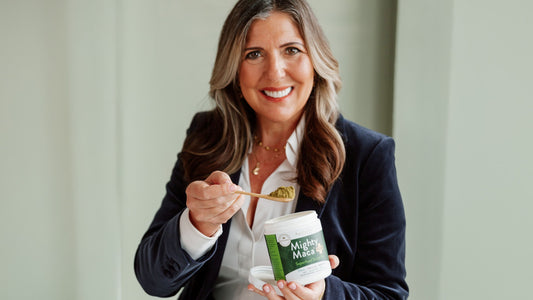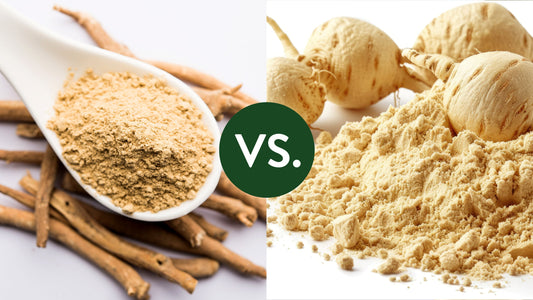Stressed spelled backwards is… DESSERTS!
Yeah for dessert! Summer treats! So stress is just a matter of perspective.
This is so appropriate as we are surrounded by stressors (emotional, physical, environmental, relational and spiritual) and what do we often do when our stress hormones kick-in? We reach for the one food item on our “forbidden” list, which for me is definitely the most calorie and carb-rich, naughty chocolate dessert I can lay my hands on in that particular stressful moment.

So the trick for all of us (me included!) is to be READY for those moments and have healthy alternatives on hand!
You’ll find one of my favorite healthy chocolate recipes below.
When we are under stress our body goes into a state of “fight, flight or freeze“. That means that we don’t focus on ourselves in a healthy way, we don’t eat right or get enough sleep, we don’t truly focus on our relationships with our families and children, we don’t have the energy to support our friends and community; and we just can’t really cope, bond or be in the moment for anyone.
And we fail to say “no” to that emotional eating!
Without chronic stress, our behavioral and relationship tendencies are quite opposite; we “feed and breed” (bond with and nurture our family and children), “tend and befriend” (nurture and support our community and friends), and “rest and digest” (take care of our basic need for good food, healthy lifestyle habits and adequate rest).
So what is actually happening at the physiological level when we are under chronic stress?
Over time with chronic stress – in our “fight, flight or freeze” mode, we see a decrease in one of our mother hormones called progesterone. Progesterone is a hormone linked to our motivation for social contact. Ah, so important!
Initially when we are first under some sort of stress, our body releases cortisol (our stress hormone), and also progesterone is released into our bloodstream. The progesterone contributes to our immediate need for social contact and community, That is a good thing, we feel social connection and support.
However, over time with the chronic persistent state of "fight, flight or freeze" our body produces very high amounts of cortisol - and eventually burns out, the brakes go on, and we then release too little cortisol - creating a further decrease in progesterone. This results in a feeling of disconnection and burnout and inflammation.
So how do we reverse and prevent burnout and the disconnect that comes with it?
First, I want to make it clear that these chronic long term stresses as well as PTSD, do cause that sense of disconnect.
For example, the business man or woman who is under immense pressure at work, who comes home to find more home pressures and is feeling disconnected from his family and his children or her family and her children.
Or another example - which I see a lot - the stay-at-home mom, working mom or single mom with children; once able to coordinate her volunteer activities, the children’s schedules and a healthy physical exercise routine, now finding herself so overwhelmed, withdrawn, burdened, and irritated at anyone who asks her for anything. These are social symptoms of chronic ongoing stress.
So for reversing and preventing burnout, discomfort, and disconnect let’s look first at restoring healthy hormonal balance. Progesterone is one of the first hormones I’ll replace in women and often at a much lower dose in men to help restore normal hormonal balance.
I often will use a progesterone topical cream, such as our Balance Cream that has 20 mg of Progesterone and 10 mg of Pregnenolone per pump dosage in the evening at bedtime to start to help reset the circadian cycle, get a good night’s sleep, and provide up level hormone support.
Key tests that I typically have run on my clients have included:
- A thorough hormonal panel performed at a specific point in the menstrual cycle for women, or anytime for men first thing in the morning before any exercise, that looks at estrogens, progesterone, free and total testosterone, pregnenolone, DHEA-S, vitamin D 25-hydroxy, HS-CRP, and Hemoglobin A1C.
- I may do a 4 point salivary cortisol test and look at AA/EPA ratio. These are key markers that give me an idea of the patient’s glycemic control (that’s their blood sugar control) and inflammatory markers, as well as reserve.
The information from this type of testing helps guide the aggressiveness of my treatment but the foundational recommendations are often the same.
I include supplementation in nutrients to decrease inflammation, support cell membrane integrity and function, and support adrenal function. I’ve had great success with these supplements and they are backed by research. My foundational recommendations include:
- Omega 3 (fatty acids)
- Herbs such as Maca, Quercetin, Resveratrol, Grape seed extract, and Turmeric, all of which are found in our Mighty Maca® Plus drink
- Vitamin D (many people are deficient)
- Progesterone and or Pregnenolone (such as Balance Cream), and DHEA
- An alkalizing diet plan. 80% alkaline 20% acid foods is healthiest.
- You can now test with my Keto-pH® Uric Acid Test Strips and check the pH of your urine to see how alkaline your system is being maintained. As well as check for urine ketones and Uric acid (Oh, and Mighty Maca® Plus is very alkalizing as well! Read why an alkaline lifestyle is so important to your health!)
In my next blog I will further talk about lifestyle upgrades that will help increase your resilience and support healthy optimal aging with balanced hormones.
Here is the chocolate recipe I mentioned above… 5-Ingredient Chocolate Cookies.
A healthy keto-genic recipe…(just don’t overdo it!)
Ingredients (makes 12 cookies):
- 1 ¼ cups almond butter or any nut or seed butter (310 g/ 11 oz)
- 2 large eggs
- ⅔ cup unsweetened cacao powder (58 g/ 2 oz)
- ⅓ cup powdered Erythritol (50 g/ 1.8 oz) – I used Sukrin Icing
- ¼ tsp salt
- Optional: 10-20 drops liquid Stevia extract and ¼ tsp cayenne pepper
Directions:
- Preheat the oven to 160 C / 320 F. Place the almond butter, eggs, unsweetened cacao powder, powdered Erythritol, and salt into a food processor. You can also use your hands or a spatula to mix the dough.
- Process until well combined.
- Using your hands, create 12 equal cookie dough balls. Place them on a baking sheet lined with parchment paper or a non-stick silicon baking mat. Using a fork, press down to flatten each cookie ball until about ½-inch (1 cm) thick.
- Place in the oven and bake for about 12 minutes or until crisped up. When done, remove from the oven and let them cool down before serving. Store them in an airtight container for up to 5 days or freeze for longer.
- Take them out when you need that chocolate fix!
Recipe courtesy Martina Slajerova @ ketodietapp.com



